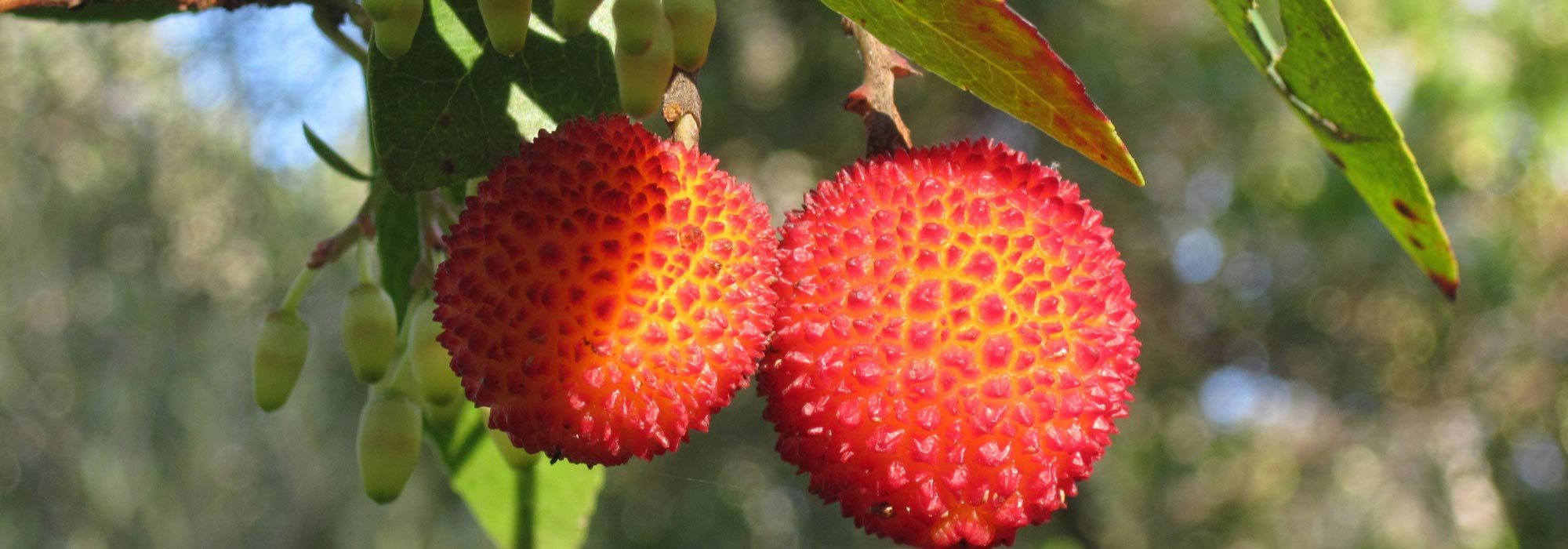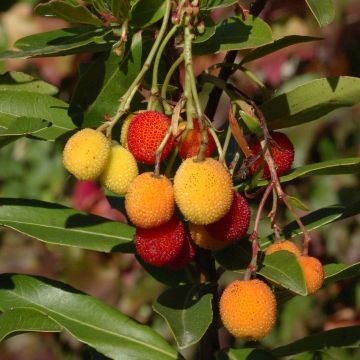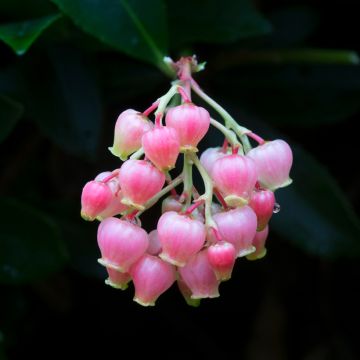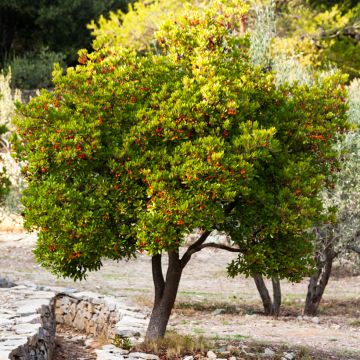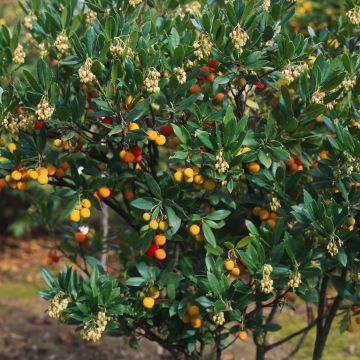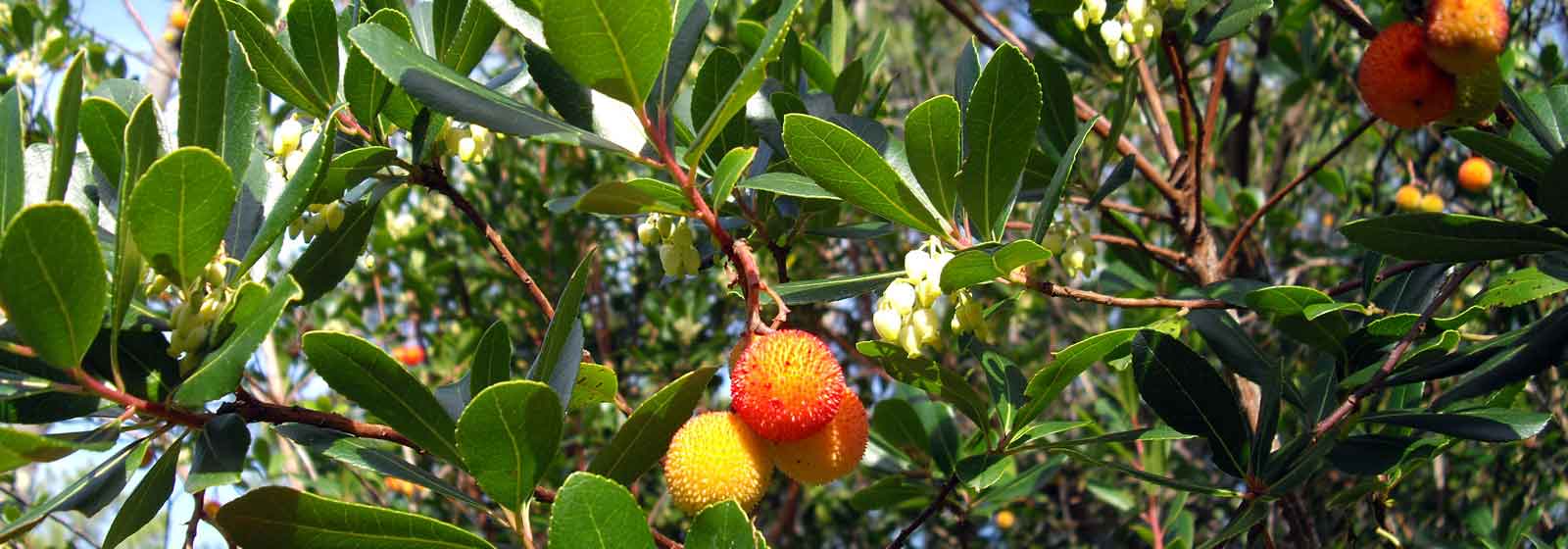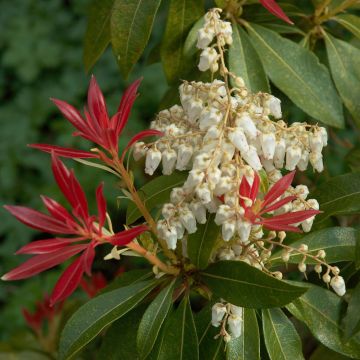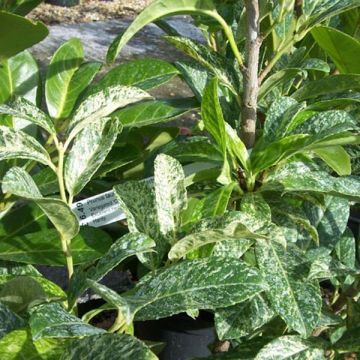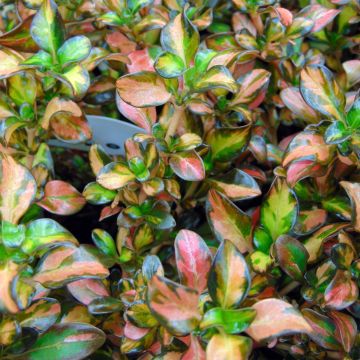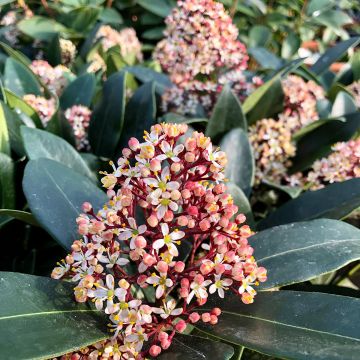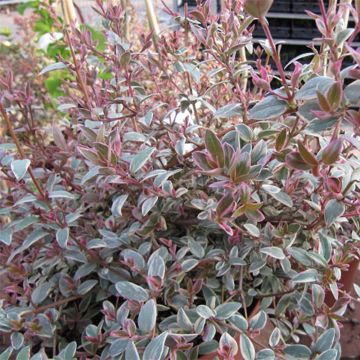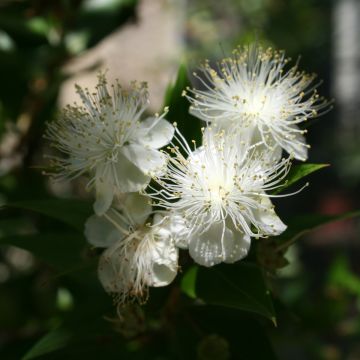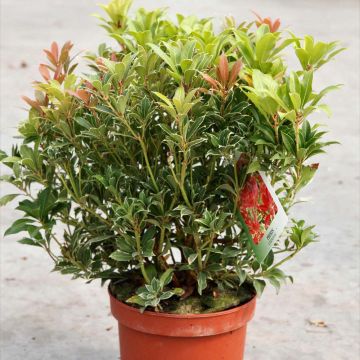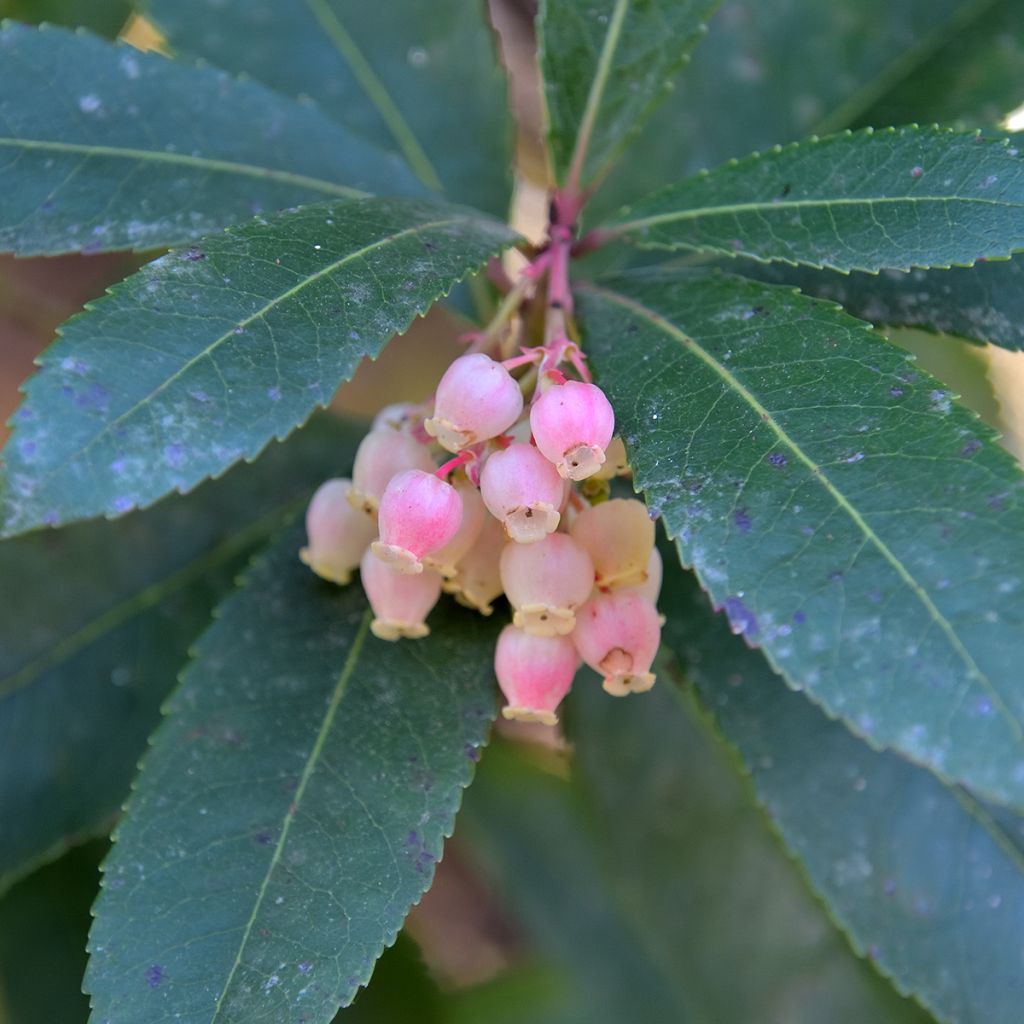

Arbousier Pink Giant 'Nevez' (Atlantic Rose) - Arbutus unedo
Arbutus unedo Pink Giant - Strawberry Tree
Arbutus unedo Pink Giant 'Nevez'
Strawberry Tree, Madrone
Very interesting item, I will try planting 2 **young plants** in the North of France. Thank you.
Arnaud , 16/10/2024
Special offer!
Receive a €20 voucher for any order over €90 (excluding delivery costs, credit notes, and plastic-free options)!
1- Add your favorite plants to your cart.
2- Once you have reached €90, confirm your order (you can even choose the delivery date!).
3- As soon as your order is shipped, you will receive an email containing your voucher code, valid for 3 months (90 days).
Your voucher is unique and can only be used once, for any order with a minimum value of €20, excluding delivery costs.
Can be combined with other current offers, non-divisible and non-refundable.
Home or relay delivery (depending on size and destination)
Schedule delivery date,
and select date in basket
This plant carries a 6 months recovery warranty
More information
We guarantee the quality of our plants for a full growing cycle, and will replace at our expense any plant that fails to recover under normal climatic and planting conditions.
Description
The Pink Giant 'Nevez' Strawberry Tree, sometimes marketed as 'Atlantic rose', is a variety of Arbutus unedo with a compact habit and faster growth and fruiting, qualities that make it a good choice for small gardens and container cultivation. This small tree or large bush is adorned with decorative foliage even in winter. It produces pretty clusters of pink flowers in autumn, followed by round fruits that ripen the following autumn. These fruits gradually change colour from green to orange-yellow and then to red. Very decorative, they are edible but not very tasty and quite indigestible when consumed raw and in large quantities. Arbutus unedo is a good seaside and drought-tolerant plant that can withstand temperatures as low as -12/-15°C (10.4 - 5 °F). Plant in spring or autumn, harvest from September to November.
Strawberry trees belong to the family Ericaceae. The Pink Giant variety is a horticultural selection derived from Arbutus unedo Compacta, from which it inherited its compact habit, floriferousness, and productivity. Common in gardens in southern and Atlantic areas of Europe, the strawberry tree (Arbutus unedo) slowly but surely forms a large, compact bush. The 'Pink Giant' variety develops into a small tree with a single trunk and a very dense crown, reaching about 3m (10 ft) in height and 2m (6-7 ft) in width in open ground by the age of 10 years if not pruned. When grown in a container, its dimensions will be more modest. The evergreen leaves are elliptical, 6 to 9 cm (2.4 - 3.5 in) long, slightly dentate along the edges, dark green, and shiny on the upper side. The young branches are reddish and the trunk is covered with a reddish-brown bark that peels off in strips. The honey-scented flowers, pale pink in colour, about 7mm (0.3 in) in diameter and resembling lily-of-the-valley bells, appear from late summer to winter. One year after flowering, they give way to fruit in the form of yellow, then red, balls, about 3-4cm (1.2 - 1.6 in) in diameter, edible but with a rough texture and not much flavour. 'Unedo' actually comes from the Latin unum edo, which can be translated as "I eat only one". Thus, this shrub will bear both flowers and fruit simultaneously in autumn.
The strawberry-like fruits have a granular skin and yellow flesh containing numerous small seeds. They are harvested when they are red and tender to the touch. These fruits, with a slightly sweet and not very flavourful taste, are mainly consumed cooked, in jams, jellies, or liqueurs.
Arbutus unedo grows in well-drained soil, generally slightly acidic, siliceous, or even rocky, but it is also found on limestone substrates, growing among evergreen oaks, pines, and wild olives. This bush adapts easily to the garden in ordinary (even slightly chalky) soil, provided that the drainage is perfect. In the garden, the Strawberry Tree can be planted as a single specimen, in a hedge, or in a container. This variety is particularly well-suited for small spaces due to its compact habit. The bush can also be planted in a large container where it will live for several years.
Plant habit
Fruit
Flowering
Foliage
Botanical data
Arbutus
unedo
Pink Giant 'Nevez'
Ericaceae
Strawberry Tree, Madrone
Arbutus (Atlantic Rose)
Cultivar or hybrid
Other Arbutus - Strawberry tree
View all →Planting and care
The Arbutus tree appreciates well-drained and light soils, with a tendency towards acidity or neutrality, or even slightly calcareous. It is a very drought-resistant plant once it is well-rooted. It prefers a sunny or partially shaded site, sheltered from cold and violent winds that can knock down the Arbutus tree or break its branches. Planting should be done in spring or autumn.
Dig a deep hole, as the Arbutus tree will develop a long taproot. Add a mixture of sand and soil, place the young plant in and cover it up. Water generously at the time of planting and during the first year, especially in summer if it is dry and hot.
Pot cultivation is possible for this variety. Choose a container of large volume (at least 40 litres), with holes at the bottom. Place a layer of clay pebbles at the bottom of the pot. Use soil for Mediterranean plants.
In cooler regions, protect your Arbutus with fleece and mulch the base in winter.
Pruning is not necessary except at the time of planting. In late winter you can prune your Arbutus tree to harmonise its shape, if necessary.
Planting period
Intended location
Care
Planting & care advice
-
, onOrder confirmed
Reply from on Promesse de fleurs
Similar products
Haven't found what you were looking for?
Hardiness is the lowest winter temperature a plant can endure without suffering serious damage or even dying. However, hardiness is affected by location (a sheltered area, such as a patio), protection (winter cover) and soil type (hardiness is improved by well-drained soil).

Photo Sharing Terms & Conditions
In order to encourage gardeners to interact and share their experiences, Promesse de fleurs offers various media enabling content to be uploaded onto its Site - in particular via the ‘Photo sharing’ module.
The User agrees to refrain from:
- Posting any content that is illegal, prejudicial, insulting, racist, inciteful to hatred, revisionist, contrary to public decency, that infringes on privacy or on the privacy rights of third parties, in particular the publicity rights of persons and goods, intellectual property rights, or the right to privacy.
- Submitting content on behalf of a third party;
- Impersonate the identity of a third party and/or publish any personal information about a third party;
In general, the User undertakes to refrain from any unethical behaviour.
All Content (in particular text, comments, files, images, photos, videos, creative works, etc.), which may be subject to property or intellectual property rights, image or other private rights, shall remain the property of the User, subject to the limited rights granted by the terms of the licence granted by Promesse de fleurs as stated below. Users are at liberty to publish or not to publish such Content on the Site, notably via the ‘Photo Sharing’ facility, and accept that this Content shall be made public and freely accessible, notably on the Internet.
Users further acknowledge, undertake to have ,and guarantee that they hold all necessary rights and permissions to publish such material on the Site, in particular with regard to the legislation in force pertaining to any privacy, property, intellectual property, image, or contractual rights, or rights of any other nature. By publishing such Content on the Site, Users acknowledge accepting full liability as publishers of the Content within the meaning of the law, and grant Promesse de fleurs, free of charge, an inclusive, worldwide licence for the said Content for the entire duration of its publication, including all reproduction, representation, up/downloading, displaying, performing, transmission, and storage rights.
Users also grant permission for their name to be linked to the Content and accept that this link may not always be made available.
By engaging in posting material, Users consent to their Content becoming automatically accessible on the Internet, in particular on other sites and/or blogs and/or web pages of the Promesse de fleurs site, including in particular social pages and the Promesse de fleurs catalogue.
Users may secure the removal of entrusted content free of charge by issuing a simple request via our contact form.
The flowering period indicated on our website applies to countries and regions located in USDA zone 8 (France, the United Kingdom, Ireland, the Netherlands, etc.)
It will vary according to where you live:
- In zones 9 to 10 (Italy, Spain, Greece, etc.), flowering will occur about 2 to 4 weeks earlier.
- In zones 6 to 7 (Germany, Poland, Slovenia, and lower mountainous regions), flowering will be delayed by 2 to 3 weeks.
- In zone 5 (Central Europe, Scandinavia), blooming will be delayed by 3 to 5 weeks.
In temperate climates, pruning of spring-flowering shrubs (forsythia, spireas, etc.) should be done just after flowering.
Pruning of summer-flowering shrubs (Indian Lilac, Perovskia, etc.) can be done in winter or spring.
In cold regions as well as with frost-sensitive plants, avoid pruning too early when severe frosts may still occur.
The planting period indicated on our website applies to countries and regions located in USDA zone 8 (France, United Kingdom, Ireland, Netherlands).
It will vary according to where you live:
- In Mediterranean zones (Marseille, Madrid, Milan, etc.), autumn and winter are the best planting periods.
- In continental zones (Strasbourg, Munich, Vienna, etc.), delay planting by 2 to 3 weeks in spring and bring it forward by 2 to 4 weeks in autumn.
- In mountainous regions (the Alps, Pyrenees, Carpathians, etc.), it is best to plant in late spring (May-June) or late summer (August-September).
The harvesting period indicated on our website applies to countries and regions in USDA zone 8 (France, England, Ireland, the Netherlands).
In colder areas (Scandinavia, Poland, Austria...) fruit and vegetable harvests are likely to be delayed by 3-4 weeks.
In warmer areas (Italy, Spain, Greece, etc.), harvesting will probably take place earlier, depending on weather conditions.
The sowing periods indicated on our website apply to countries and regions within USDA Zone 8 (France, UK, Ireland, Netherlands).
In colder areas (Scandinavia, Poland, Austria...), delay any outdoor sowing by 3-4 weeks, or sow under glass.
In warmer climes (Italy, Spain, Greece, etc.), bring outdoor sowing forward by a few weeks.






























